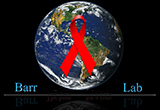My Journey to Becoming a PI
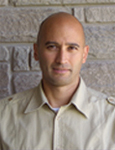 The following is meant for those curious about my path to being a Principal Investigator (PI) and, more so, for those thinking about plotting their own professional course. My journey began in high school with a fascination for the unknown, particularly the realm of what we cannot see with the naked eye. After learning about infectious diseases such as the Spanish Flu and the Black Plague, I was shocked at how these seemingly simple pathogens could decimate the human population. It was after watching a 20/20 TV documentary about HIV/AIDS, narrated through a little girl infected with, and orphaned by, HIV, that my passion and intrigue for HIV was born. How this disease managed to gain a foot-hold in the human population to affect tens of millions of people around the world, really fascinated me. I mean really, a virus that encodes a mere 9 proteins could wreak such havoc on the human population? Perhaps even more mind-boggling to me at the time, and admittingly naïve, was how the scientific community could not have already found a cure after 10 years of HIV/AIDS being on the scene. I saw this as a challenge and decided to seek training as a scientist.
The following is meant for those curious about my path to being a Principal Investigator (PI) and, more so, for those thinking about plotting their own professional course. My journey began in high school with a fascination for the unknown, particularly the realm of what we cannot see with the naked eye. After learning about infectious diseases such as the Spanish Flu and the Black Plague, I was shocked at how these seemingly simple pathogens could decimate the human population. It was after watching a 20/20 TV documentary about HIV/AIDS, narrated through a little girl infected with, and orphaned by, HIV, that my passion and intrigue for HIV was born. How this disease managed to gain a foot-hold in the human population to affect tens of millions of people around the world, really fascinated me. I mean really, a virus that encodes a mere 9 proteins could wreak such havoc on the human population? Perhaps even more mind-boggling to me at the time, and admittingly naïve, was how the scientific community could not have already found a cure after 10 years of HIV/AIDS being on the scene. I saw this as a challenge and decided to seek training as a scientist.
 I obtained my undergraduate BSc degree in Cellular, Molecular and Microbial Biology at
I obtained my undergraduate BSc degree in Cellular, Molecular and Microbial Biology at 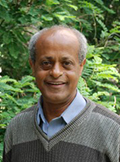 my hometown university, University of Calgary (Canada). When thinking about the research path I wanted to take, I kept in mind the question of why the world had not cured this disease with so many labs already studying it. I figured I needed a different, more unique approach. Having completed my degree, I decided to take a year before graduate studies and expand my background of the world of Biochemistry, thinking that it would better prepare me for grad school and the future by providing me with an even stronger foundation in the molecular world. I enrolled in most of the 4th year courses that I could, and also carried out a year-long independent research project course, to get my hands wet in research. After all of this, I developed a passion for Molecular Biology and decided to gain more specialized training in this area as a PhD
my hometown university, University of Calgary (Canada). When thinking about the research path I wanted to take, I kept in mind the question of why the world had not cured this disease with so many labs already studying it. I figured I needed a different, more unique approach. Having completed my degree, I decided to take a year before graduate studies and expand my background of the world of Biochemistry, thinking that it would better prepare me for grad school and the future by providing me with an even stronger foundation in the molecular world. I enrolled in most of the 4th year courses that I could, and also carried out a year-long independent research project course, to get my hands wet in research. After all of this, I developed a passion for Molecular Biology and decided to gain more specialized training in this area as a PhD  student. Once again, ‘trying to think differently’, I chose to obtain this training in a biological system other than HIV, so that I could bring a different perspective to the HIV field in the future. I chose to work with Dr. Lashitew Gedamu at the University of Calgary (Canada) studying an interesting tropical parasite called Leishmania. This system opened my eyes to the world of molecular and cellular biology, especially macrophage biology. I even dabbled in the world of x-ray crystallography, learning the theory, growing my own crystal and obtaining diffraction data! The crystal ended up being salt, but the start-to-finish experience of trying to grow and diffract an authentic protein crystal was invaluable and helped me later on in structural analyses. The abstract of my PhD thesis best summarizes the ~6 years of my research:
student. Once again, ‘trying to think differently’, I chose to obtain this training in a biological system other than HIV, so that I could bring a different perspective to the HIV field in the future. I chose to work with Dr. Lashitew Gedamu at the University of Calgary (Canada) studying an interesting tropical parasite called Leishmania. This system opened my eyes to the world of molecular and cellular biology, especially macrophage biology. I even dabbled in the world of x-ray crystallography, learning the theory, growing my own crystal and obtaining diffraction data! The crystal ended up being salt, but the start-to-finish experience of trying to grow and diffract an authentic protein crystal was invaluable and helped me later on in structural analyses. The abstract of my PhD thesis best summarizes the ~6 years of my research:“The mechanisms by which Leishmania parasites survive exposure to reactive oxygen species (ROS) and reactive nitrogen species (RNS) within phagosomes of macrophages are not well known. Previous studies have shown that the production of ROS is important early in controlling Leishmania infection and that the production of RNS alone is sufficient and necessary to control infection in mice (Gantt, K.R, et al. (2001) J. Immunol. 167: 893-901; Murray, H.W. and Nathan, C.F. (1999) J. Exp. Med. 189: 741-746). We have cloned and characterized three antioxidant genes belonging to the 2-Cys family of peroxidoxins from Leishmania chagasi. The nucleic acid sequence of the 5’UTRs and coding regions of each gene are highly conserved, whereas the 3’UTRs have diverged significantly. LcPxn1 is predominantly expressed in the amastigote stage, whereas LcPxn2 and LcPxn3 are expressed mainly in the promastigote stage, with LcPxn3 being far less abundant than LcPxn2. LcPxn2 and LcPxn3 possess a nine amino acid extension at the carboxyl terminus, which LcPxn1 lacks. Recombinant LcPxn1 protein was found to be capable of detoxifying hydrogen peroxide, hydroperoxide, hydroxyl radicals, peroxynitrite and nitric oxide, whereas only hydrogen peroxide-detoxifying activity was detected with recombinant LcPxn2. Site-directed mutagenesis studies revealed that the conserved Cys52 residue is essential for detoxifying hydrogen peroxide, t-butyl hydroperoxide and hydroxyl radicals, whereas the conserved Cys173 residue is essential for detoxifying t-butyl hydroperoxide and peroxynitrite. LcPxn1 and LcPxn2 are localized to the cytoplasm and over-expression of LcPxn1 in L. chagasi parasites enhanced survival in culture when exposed to exogenous ROS and RNS and also enhanced survival within U937 macrophage cells. Some of the results contained herein represent the first reports of an enzymatic defense against hydroxyl radicals, peroxynitrite and nitric oxide in Leishmania.”
 Another noteworthy and life-changing experience to mention during this time was the 3 months I got to spend in my supervisor’s home country of Ethiopia. One and a half months of this time was spent at the Armauer Hansen Research Institute (AHRI) in Addis Ababa establishing a molecular biology laboratory course/workshop that helped build capacity in molecular biology research. The course was given to 21 individuals selected from over 60 applications from various academic and research institutes all over Ethiopia. The course was designed to enhance the student’s research and teaching activities in the area of Molecular Biology. Participants designed and performed a variety of experiments in genome typing/fingerprinting, cloning, and RNA and protein expression. The training we carried out built capacity in human health research including diagnostics, prevention and treatment of infectious diseases relevant to Ethiopia. In addition, the training made an impact in the fields of Animal, Plant and Microbial Biodiversity, Vaccine/Drug Development and Criminal Investigations (forensics).
Another noteworthy and life-changing experience to mention during this time was the 3 months I got to spend in my supervisor’s home country of Ethiopia. One and a half months of this time was spent at the Armauer Hansen Research Institute (AHRI) in Addis Ababa establishing a molecular biology laboratory course/workshop that helped build capacity in molecular biology research. The course was given to 21 individuals selected from over 60 applications from various academic and research institutes all over Ethiopia. The course was designed to enhance the student’s research and teaching activities in the area of Molecular Biology. Participants designed and performed a variety of experiments in genome typing/fingerprinting, cloning, and RNA and protein expression. The training we carried out built capacity in human health research including diagnostics, prevention and treatment of infectious diseases relevant to Ethiopia. In addition, the training made an impact in the fields of Animal, Plant and Microbial Biodiversity, Vaccine/Drug Development and Criminal Investigations (forensics).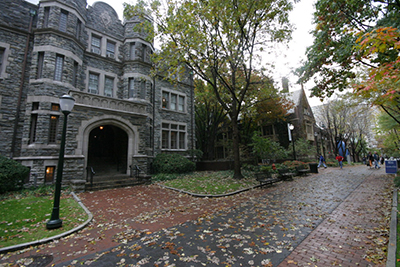 After my degree, I felt that I was ready to jump into the world of
After my degree, I felt that I was ready to jump into the world of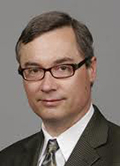 HIV and looked for laboratories around the world doing interesting research. One of those was the vibrant laboratory of Dr. Rick Bushman. I joined Rick’s laboratory at The University of Pennsylvania (UPenn), just after he left the Salk Institute. At UPenn, I learned the inner workings of HIV with a special focus on HIV integration. While gaining valuable expertise in molecular virology and bioinformatics, my research helped shed light on the mechanism of retroviral integration. In trying to identify a human protein that could block HIV integration, I became acquainted with the field of restriction factors (interferon-induced antiviral proteins that act to inhibit steps in viral lifecycles), which to this day is a major focus of my laboratory. Just before leaving Rick’s laboratory for a second postdoc position back in Canada, we identified TRIM22 as a new factor that potently inhibited
HIV and looked for laboratories around the world doing interesting research. One of those was the vibrant laboratory of Dr. Rick Bushman. I joined Rick’s laboratory at The University of Pennsylvania (UPenn), just after he left the Salk Institute. At UPenn, I learned the inner workings of HIV with a special focus on HIV integration. While gaining valuable expertise in molecular virology and bioinformatics, my research helped shed light on the mechanism of retroviral integration. In trying to identify a human protein that could block HIV integration, I became acquainted with the field of restriction factors (interferon-induced antiviral proteins that act to inhibit steps in viral lifecycles), which to this day is a major focus of my laboratory. Just before leaving Rick’s laboratory for a second postdoc position back in Canada, we identified TRIM22 as a new factor that potently inhibited  HIV replication (although not by blocking integration). Graciously, Rick allowed me to take the TRIM22 project with me to develop it into my own project.
HIV replication (although not by blocking integration). Graciously, Rick allowed me to take the TRIM22 project with me to develop it into my own project.
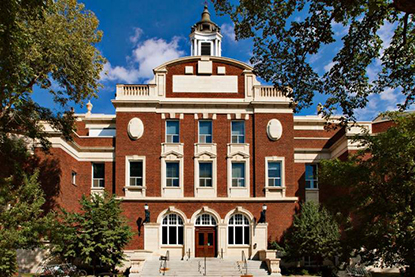
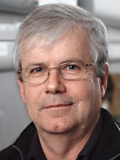 When selecting my next laboratory as a postdoc, I was looking for one that would not only let me bring a project of my own to study, but one that had the expertise to help me further the project and my training as a scientist. My search led me to the laboratory of Dr. Jim Smiley at the University of Alberta (Canada), a world-renowned virologist with a specialty in Herpesvirus biology. Jim took me under his wing and opened up the field of interferon and antiviral immunity to me. We furthered the project providing key insight into how TRIM22 blocks HIV replication. In addition, building off a previous observation in Jim’s laboratory regarding another host antiviral protein called HERC5, we were able to show that HERC5 is a potent inhibitor of HIV replication. Jim graciously let me take the HERC5 project with me to the
When selecting my next laboratory as a postdoc, I was looking for one that would not only let me bring a project of my own to study, but one that had the expertise to help me further the project and my training as a scientist. My search led me to the laboratory of Dr. Jim Smiley at the University of Alberta (Canada), a world-renowned virologist with a specialty in Herpesvirus biology. Jim took me under his wing and opened up the field of interferon and antiviral immunity to me. We furthered the project providing key insight into how TRIM22 blocks HIV replication. In addition, building off a previous observation in Jim’s laboratory regarding another host antiviral protein called HERC5, we were able to show that HERC5 is a potent inhibitor of HIV replication. Jim graciously let me take the HERC5 project with me to the  next stage of my journey as a new PI, which together with TRIM22 formed the basis of my new research as an independent investigator.
next stage of my journey as a new PI, which together with TRIM22 formed the basis of my new research as an independent investigator.
I am indebted to my 3 mentors, who have all contributed in different ways to my success as a researcher.
The next leg in my journey was Western University in London, Ontario, Canada …a ‘land of extraordinary people’ with whom I continue to explore the unknown as a Principle Investigator.



